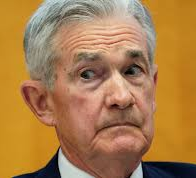The S&P had its best week of the year this week; last week, it had its worst week in 18 months. Do you want to bet on next week?
The S&P fell ~4% last week and bounced back ~4% this week.

The S&P ended last week right on its lows. It rallied back on Monday and Tuesday but nearly fell to new lows Wednesday morning following the Harris/Trump debate and the CPI report. But then the market “turned on a dime,” roared higher, and rallied to its best close in six days following bullish comments from Jensen Huang, CEO of NVDA.


Equity markets build on Wednesday’s turnaround going into the weekend as credit markets priced in higher odds of a 50 bps cut from the Fed next Wednesday.

The DJIA fell and rallied back ~1,500 points in September’s first nine trading days.

The Toronto Composite closed this week at new record highs.

Interest rates
10-year Treasury futures reached a 16-year low last October (~5% yield) but have rallied to a 16-month high this week (yield ~3.65%.) The bond market seems to be anticipating more of a recession than a soft landing as the Fed is set to begin a rate-cutting cycle.

Forward US short rates are pricing a drop of ~200 bps (to ~3.25%) over the next twelve months.

Forward Canadian short rates are pricing a drop of ~150 bps (to ~2.75%) over the next twelve months. The BoC started cutting the benchmark overnight rate in June and has made three 25 bps cuts, bringing short rates down to 4.25 from 5%. The BoC is expected to cut 25 bps at their next meeting on October 23.

The European Central Bank cut short rates by 25 bps (to 3.5%) this week. Next week, while the Fed is expected to cut rates on Wednesday, the BoJ is expected to raise rates on Thursday from the current 0.25% level.
Energy
Nymex WTI futures fell to a 16-month low this week (nearly a 3-year low), down almost $20 from July’s highs.

Nymex wholesale gasoline prices touched a 44-month low this week.

Currencies
The Japanese Yen had its highest weekly YTD close this week, up ~14% from July’s 36-year lows. (Japanese authorities’ yen buying in early July ignited the covering of massive short yen positions – one leg of the famous Yen Carry Trade.) Speculative positioning in CME Yen futures swung from ~190,000 contracts net short to ~65,000 contracts net long between early July and this week. (Each contract is for 12.5 million Yen.) Speculators turned net long the Yen three weeks ago for the first time in three years.

The US Dollar Index has trended lower over the past two months, down ~5%. The Yen rally (with a 14% weighting in the USDX) has weighed on the USD, but most of the other major currencies, especially the European currencies, have rallied against the USD since early July.

The Canadian Dollar hit a 22-month low in August under the weight of a historically massive speculative net short position in CME futures. Still, it rallied back >2.5 cents to the late August highs, with speculators liquidating ~70% of their short positions. The CAD has dropped about one cent from the recent highs, with US 3-month yields at ~80bps premium over Canadian rates.

Gold
Gold rallied to new all-time highs above $2,600 this week, up ~$80 from last Friday’s close. Gold has rallied ~9% in the last seven weeks, while the USDX has fallen ~4%. The September 10 COT report shows that speculators hold their largest net long gold position in over four years.

Comex trading volume this week was relatively modest compared to levels over the past year despite the media coverage of the breakout to new highs.

The GDX (gold miners ETF) closed at a 28-month high Friday, up ~60% from February’s low and ~80% from September 2022’s low. Gold futures are up ~$1,000 (62%) from the September 2022 low.

This longer-term chart shows that the GDX is now substantially below the levels reached in 2011 when gold peaked at around $1,900 ($700 below where it is now.)

The correlation between gold and gold shares
I had the pleasure of interviewing Lobo Tiggre this week while I was the guest host of the Moneytalks podcast. You can listen to the podcast here—the interview with Lobo starts at the beginning. (Later in the podcast, around the 1-hour 9-minute mark, I interviewed Rob Levy from Border Gold and discussed recent developments driving gold higher.)
Lobo owns gold bullion because he believes it is real money (compared to fiat currencies), but he (selectively) buys shares in gold mining companies to earn capital gains.
Part of our conversation was about why gold shares have underperformed gold, given that (in the old days) analysts saw gold shares as a leveraged play on the price of gold, assuming that a rising gold price exponentially increased the operating margins of gold mining companies.
I highly recommend that readers interested in speculating on gold shares listen to the 35-minute interview and read Lobo’s article, “Are Gold Stocks Broken?” Additionally, I recommend this great article on gold shares by Goehring & Rozencwajg.
I like Lobo’s idea that gold is real money and gold shares are a speculation. Gold and gold shares are not the same thing, and the correlation between the price of gold and the price of gold shares is variable. For instance, central banks have been buying gold but not the shares of gold mining companies. That alone would weaken the correlation between bullion and shares. Additionally, gold shares represent only ~0.50% of the S&P, so passive capital flows of $100 into the S&P would see an allocation of only 50 cents to gold shares – they are essentially ignored by passive funds (which are the lion’s share of capital flows these days.)
With WTI down ~20% since the beginning of July and gold up ~12%, the operating margins of gold mining companies probably increased materially, given that energy costs (primarily diesel) represent ~30% of operating costs.
My thoughts
The short-term volatility in stock indices has been wicked, but the market seems more willing to rise than fall. Perhaps the 10X rally in the NAZ from 2009 to current levels has conditioned “everybody” to believe that the market may have an occasional brief correction, but that is simply a great opportunity to BTD.
Given that the forward market is pricing ~200 bps of Fed cuts over the next twelve months, what’s the difference if they start with a 25-bps or 50-bps cut on Wednesday? Apparently, to some folks, it matters a lot, given the avalanche of opinions about the “signals” the cut size will send.
The odds of a 50 bps cut increased significantly on Friday following an article by Nick Timiraos (The Fed Whisperer), which goosed equity markets to close the week at their highs. Does that mean investors now view Fed cuts as a “green light special to buy?”
The Great Debate came and went, and Kamala’s apparent win may have caused a little selling on concerns over higher capital gains taxes, but how much does it matter who becomes President if Congress is divided? And even if she wins the popularity contest, Trump could get more Electoral College votes and become the President. When will we know who won?
Wednesday’s CPI report was firmer than hoped for and reduced the odds of a 50 bps cut, but the Great Debate and the CPI were forgotten in a heartbeat when Jensen Huang forecasted a rosy future for AI and NVDA. That’s what matters!
And then there’s the rising debt. The interest cost is estimated at $1.5 trillion for this calendar year. Whether the GOP or the Democrats are in charge next year, the debt and deficits will probably only get bigger. But the MMT (Modern Monetary Theory) folks tell us the debt doesn’t matter (we mostly pay ourselves the interest – outside of a few freeloading foreigners). It only matters if inflation starts running too hot, and the Fed’s got that under control, so don’t worry.
Inflation has come down, but I believe it will probably not fall much more and will likely rise again. Continuing government deficits destroy a currency’s purchasing power, which is the essence of inflation. In addition, I expect to see more labour strikes. Boeing, longshoremen on the East and Gulf coasts, railroad workers, and Air Canada are currently in the spotlight, with more to come. If governments keep destroying the currency’s purchasing power, workers will keep feeling the need to “catch up” and demand more pay.
My short-term trading
I started this week with short CAD and gold positions established last Friday. I covered both positions on Wednesday. I lost ~$20 an ounce on the gold (and I’m glad I covered before the big jump on Thursday and Friday,) but my CAD profit was twice the size of the gold loss.
I shorted the S&P near Monday’s high and was nicely ahead when the market fell Wednesday morning. I covered the trade for a tiny gain when the S&P stormed back from the lows for no apparent reason. (I didn’t see the NVDA news until later.)
I reshorted the CAD on Thursday and held that into the weekend.
I bought OTM long-dated puts on the 30-year bond on Thursday. In last week’s On My Radar section, I noted that small speculators have steadily grown their net long position on the long bond over the past three months to a 10-plus-year high. I’ve been waiting for a signal to take the other side of their trade, and I liked this week’s price action. (I did some digging—it looks like small specs have their largest long position ever on the 30-year, but open interest has grown significantly over the past year, which may dilute the significance of their sizing.)
On my radar
Here’s Brent Donnelly’s calendar for next week:

The Barney report
Here’s Barney spotting another dog about 100 yards away across an open field. Five seconds later, he was in a flat-out gallop to meet the other dog. That boy loves to run!

This is one of the old logging roads that Barney and I take to find the trails running into the forest.

Listen to Victor talk markets on the Moneytalks podcast
I hosted the Moneytalks show this week while Mike was away. I had four great guests, and we delivered great content to our listeners. You can listen to the whole show here.
I will probably not write the Trading Desk Notes next week because I’ll be playing in the Special Olympics event and will have a houseful of guests who will also be in the tournament!
Oceanside Special Olympics
The local chapter of Special Olympics is holding its annual golf tournament on September 21 at the Pheasant Glen golf course in Qualicum to raise money for the 50 or so special needs athletes in the Oceanside area of Vancouver Island. This is the chapter’s one-and-only fundraising event of the year. My team will play (and donate) again this year, and Mike Campbell and Martin Murenbeeld (and their wives) will also participate.
Here’s a link with information about the event. Please consider playing, donating, or becoming a sponsor. You will never regret it! Thank you.
The Archive
Readers can access weekly Trading Desk Notes from the past seven years by clicking the Good Old Stuff-Archive button on the right side of this page.
Subscribe: You have free access to everything on this site. Subscribers receive an email alert when I post something new, usually four to six times a month.
Victor Adair retired from the Canadian brokerage business in 2020 after 44 years and is no longer licensed to provide investment advice. Nothing on this website is investment advice for anyone about anything.




